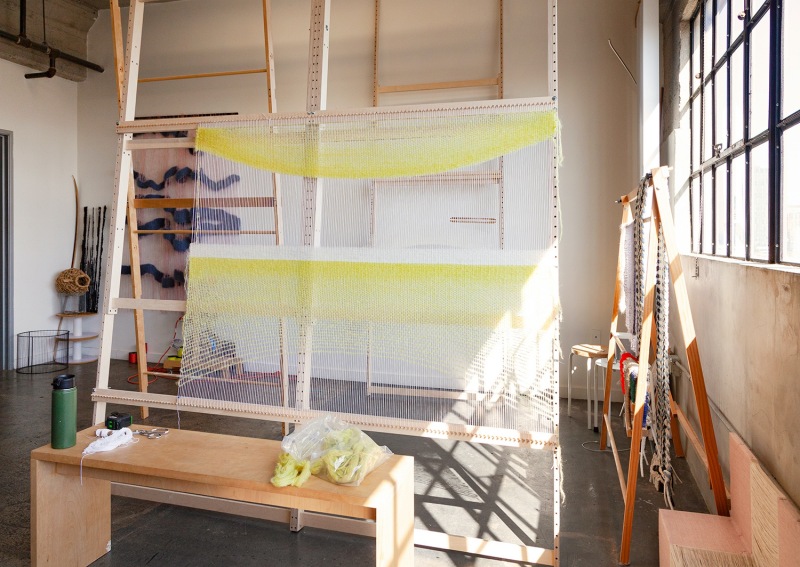Mark Rothko explored the inherent tension of rectangles; Robert Motherwell did the same for ovals. What draws you to the ellipse?
I would first need to explain the series that predates “The Subsuming Ellipse.” Each series required two to three years of examination to move onto the next.
The “Full Gradient” series is an infinite color field. The composition only allows for a limited window into this field. The varied spacing between the weft allows for a subtle spatial shift, influencing the color fields. The work that follows is “Live Edge Forms.” What was previously an infinite field, now contained with its dense edge, allows for examining not only the space between the weft/color shift but the distinct forms themselves. “Live Edge” refers to a living organism, referencing primitive growth. The “Ellipse” series proceeds beyond the organic edges and focuses on concrete geometric shapes. The ellipse is seemingly simple yet requires control and discipline to create symmetrical curves.
“The Subsuming Ellipse” arrives at a more fully formed composition, focusing on the ellipses’ movements, considering all of the series before it. It’s the only series that could give visual form to my 2017 experiences that this work illuminates. I explore all the emotive possibilities of the ellipses’ geometry and the spatial relationships between forms. From one work to the next, there’s a reactivity—ellipses push, mirror, absorb, and dematerialize.
What I love about your work is that it evokes movement yet emanates a calming stillness. It feels simultaneously infinite and intimate. How do you strike this balance?
My work is often biographical. Therefore, my social and psychic landscape has a direct bearing on what settles on the loom.
What do the tonal gradations signify? What has experimenting with subtle color variations taught you about using color?
The gradation is about the study of space between the weft. It has more to do with space than the color. The color is secondary.
My references to all the colors in “The Subsuming Ellipse” hold personal significance. My first visceral nightmare as a child was a blast of color. I woke up soaked in sweat, screaming; my dream was an infinite field of glowing purple. Color is never taken for granted in my work.
Has this body of work shifted how you approach your practice?
I usually like to create work with ample time in-between to allow more time for consideration. I sometimes even jump back into a previous series to hone in on a specific aspect.
However, I was only working on “The Subsuming Ellipse” uninterrupted for an extended period. The subject matter, this period of four months, was also challenging on the psyche. I would work on the loom all day, then have long conversations with Jennifer Carvalho, the gallerist at Carvalho Park, about my memories paired with each work. When the memories imprint on the loom, there’s a natural flow. Forming those moments into words to share with another person, for me, was more emotionally taxing. I’m not sure how I can change this in the future as these conversations are critical, and I couldn’t ask for a more supportive gallery partner to share these thoughts. (The outcome of the long talks can be read here.)
It’s too early to know how this experience will change my approach. This will take more mulling over.

